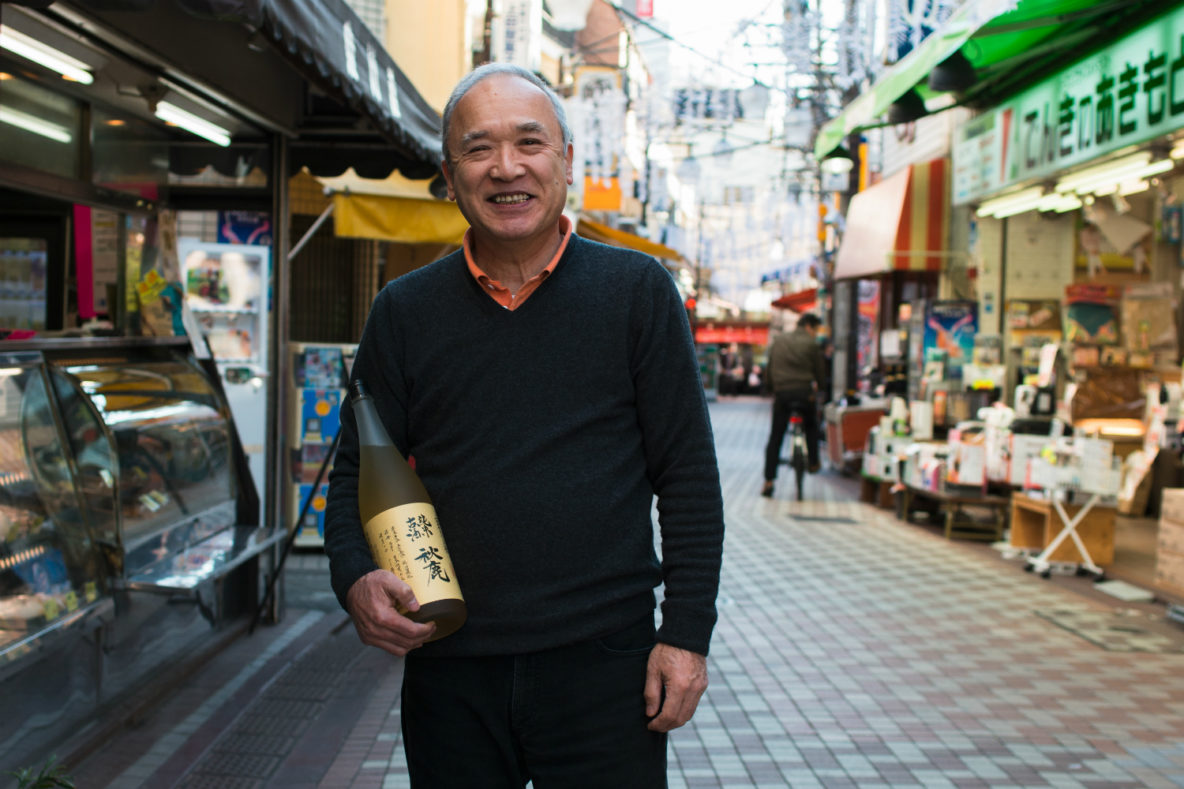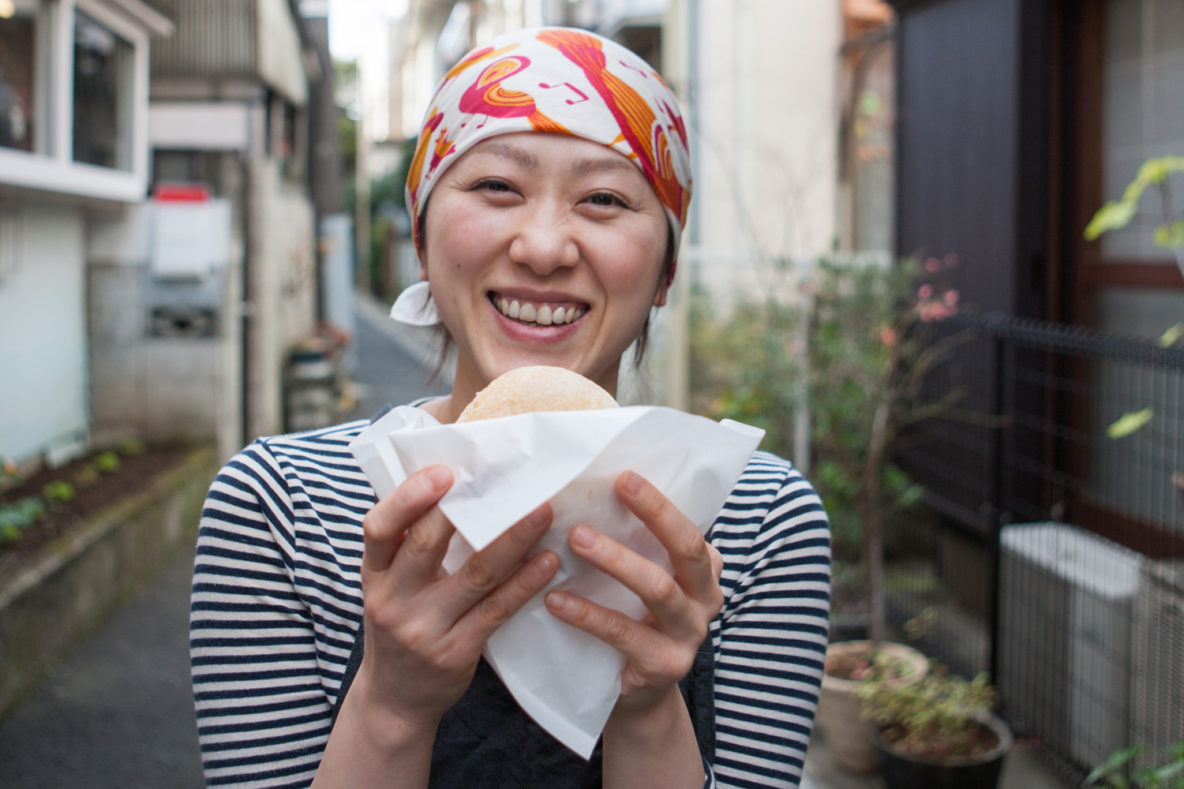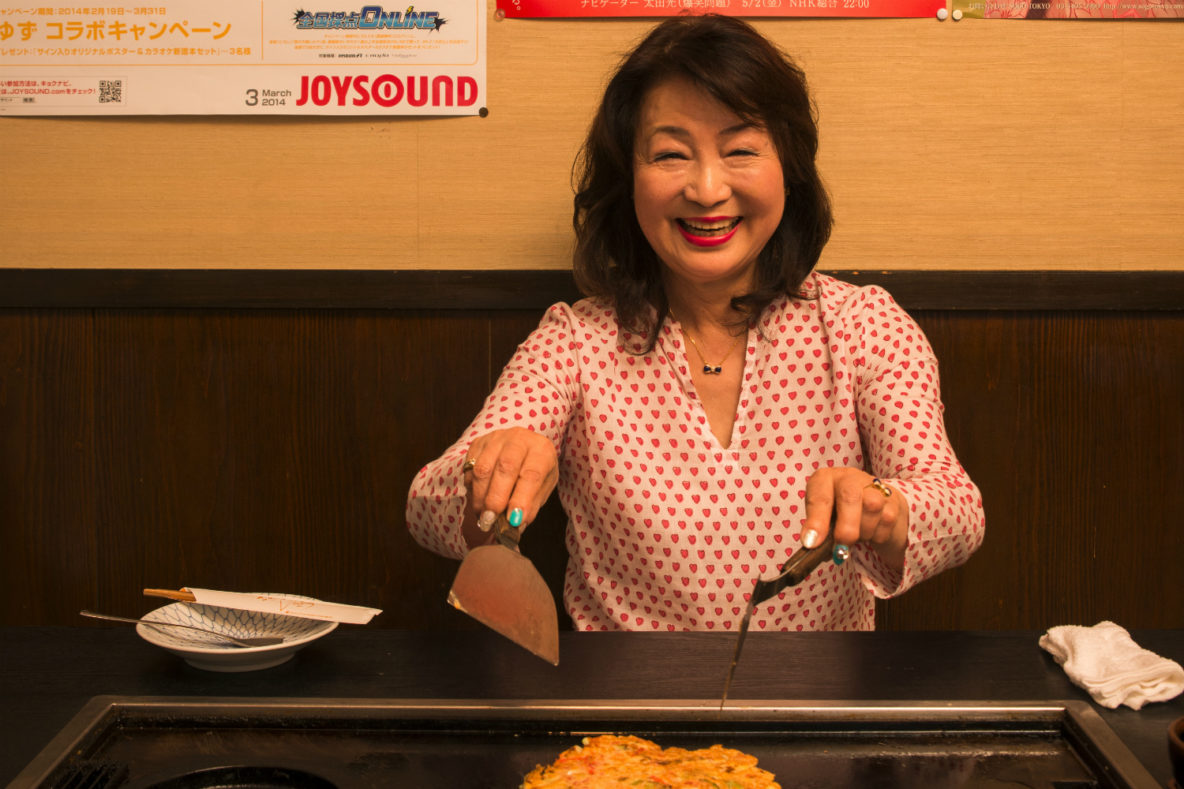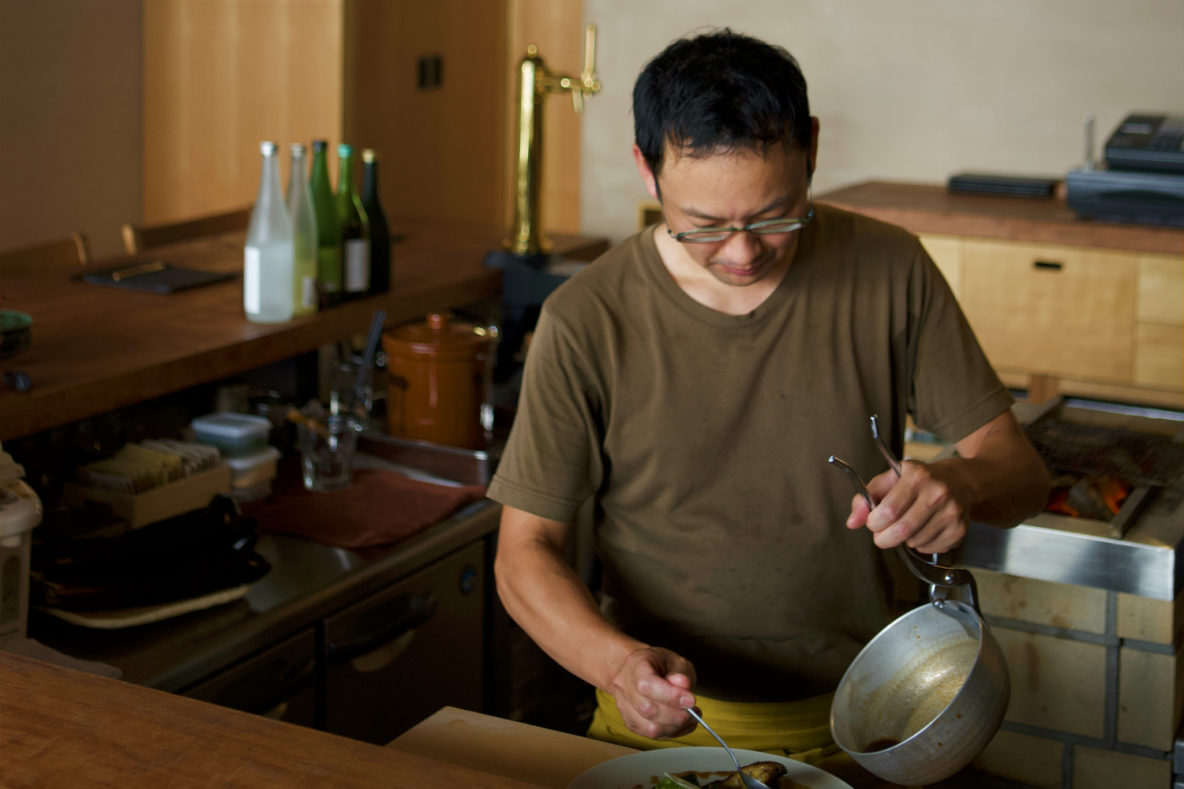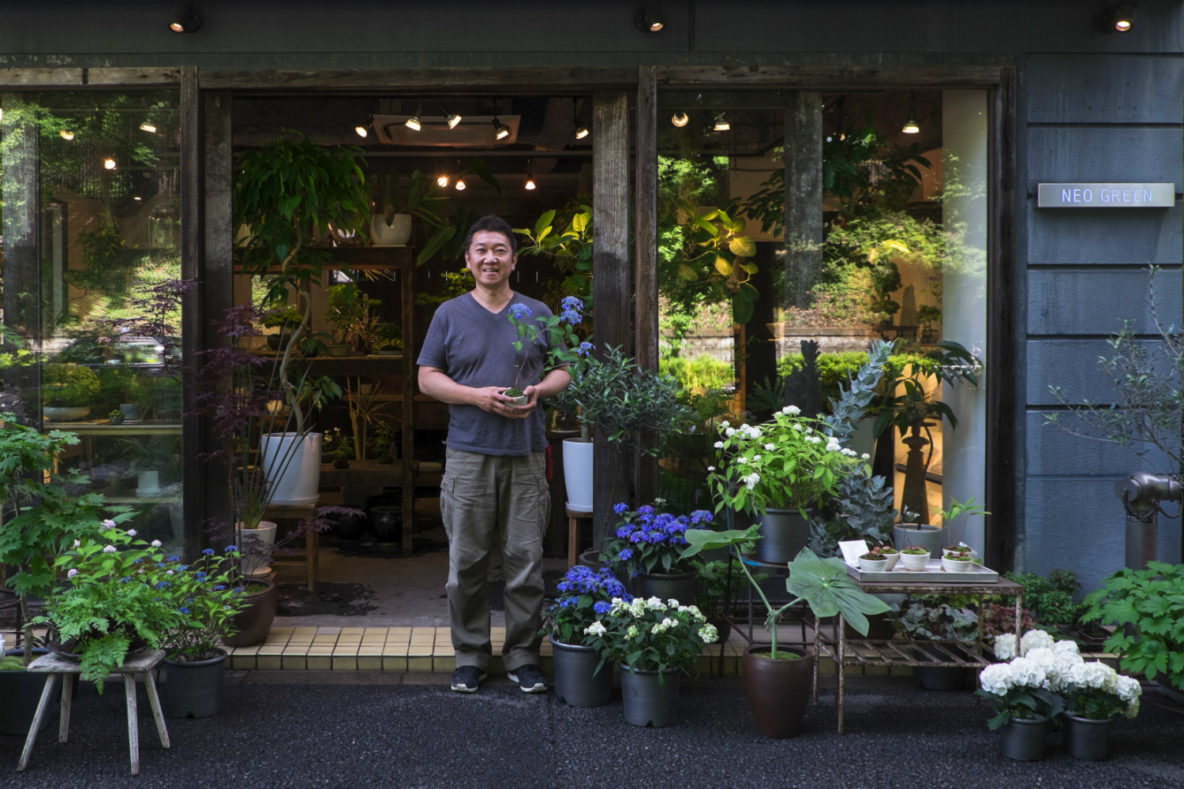Hajime Suzuki knows the difference between a good Japanese restaurant and a great one. “You must engage the senses,” explains the owner of Fuku, a beloved west-Tokyo yakitori place, “the view of the chefs at work, the aroma of the chicken fizzling on the grill, and of course the taste of the food.” Yakitori, meaning literally grilled (‘yaki’) chicken (‘tori’), are skewers of chicken cooked over white-hot charcoal. From neck to tail, Fuku’s menu lists various parts of the bird, including the familiar (breast, wings, mincemeat) and the ambitious (heart, giblets, cartilage). Around the turn of the millennium, Suzuki, who was then working in the fashion business, began dreaming of opening a restaurant. “The image in my mind was of a warm place with a diverse, international clientele all enjoying themselves, as relaxed as if they were at home,” he says. In Yoyogi Uehara, a rapidly gentrifying neighbourhood still lacking good dining options, he found a promising location – “just far enough away from the station” – and the ideal landlord, who offered to knock down his existing building and build a new one to Suzuki’s specifications. He designed a space with high ceilings – rare for Tokyo – a counter with 16 seats, and several tables around the edge. The simple white uniforms of the chefs, the plain teahouse-colour walls, and the earthy ceramics were also part of his plan. “Everything we do should be understated so as not to disturb the customers,” he says. “Their enjoyment creates the atmosphere.” At the heart of the restaurant is the charcoal grill, manned by a chef who – battling through waves of heat and smoke – staggers the various orders and ingredients with the tempo of an orchestra conductor. The cleanliness and cut of the meat are critical to achieving an even cook. The charcoal – always from Wakayama, a prefecture in western Japan famous for it – is just as important. Regulars know to order plenty of the vegetable skewers and other non-chicken dishes that make up about half the menu, including succulent shiitake mushrooms, cuts of aubergine, and the ‘danshaku’ potato topped with a slice of melting butter. The green peppers wrapped in bacon and stuffed with cheese should be requested early, before they sell out. When he’s not at the grill himself, Suzuki can often be seen standing quietly at the back, discreetly paying attention to every detail. “If I listen carefully,” he says, “I can hear when the grill needs new charcoal, or when a chicken skewer is fizzling and ready to be served.”
Honma Saketen
Honma Saketen is not for everyone. In truth, it’s for rather few people. Proprietor Fujio Honma doesn’t sell any of the delicate, fragrant stuff that most people think is sake – superficial he calls it – and he refuses to stock anything by Japan’s best-known breweries. “Those big guys are motivated by profit,” he says. “But I search for people with this…” he says, and he pounds his fist against his heart. Honma buys from just 20 artisan makers, and his inventory is a poke in the eye of sake orthodoxy. Take the conventional wisdom on polishing rice: it’s said that the more you mill, the better the resulting sake. When a brewer strips away 40 per cent of the grain, he can call the drink ginjo (literally: ‘brewed with care’). If he removes at least 50 per cent, he’s making daiginjo (‘brewed with the utmost care’). So what should be made of Okuharima Yamahai from Hyogo Prefecture? It’s fabulously earthy, with hints of stewed apples and melon – and it’s made with rice whose grain is reduced by just 20 per cent. Honma says good rice doesn’t need to be polished as much, that the minerals in the outer layers add complexity when you’re ageing a bottle. He’s a fan of aged sake, all dark and pungent with caramel notes, although he concedes it’s still a niche interest in Japan. More heretically, he likes to mature unpasteurised sake. Textbooks and retailers will tell you the untreated stuff should be refrigerated and drunk within weeks, but Honma disagrees. “Open a bottle, drink a bit to make space for some air, then leave it at room temperature so the yeasts come alive,” he says. “Don’t put it in the fridge or it’ll never develop. You’ll notice a difference after two or three days, but you can leave it for years if you have the discipline not to drink it.” He says if the sake is well made, with lightly milled rice and lots of acidity, it will develop deeper, wilder flavours. “It goes against all common sense, and I don’t know how it works, but the sake just opens up.” Honma inherited the shop from his father. At the time it was a general liquor store, but discount retailers were crushing him in the beer market, and he’s never had a taste for wine, so he focused instead on sake. It was a purely commercial decision, until he visited the Shinkame Brewery near Tokyo, tried a 12-year-old brew, and realised there was a world beyond the big, clean, commercial stuff. He set out to find people who, like him, care more about flavour than finance, sniffing out bold, full-bodied drinks packed with umami. As a result, Honma has an unusually tight relationship with his brewers. It’s a relationship that he describes as being like a lovers’ bond. They shower him with gifts, like the first option on full tanks of sake, or exclusive rights to very special releases. In return, he … Read More
Haritts
Haritts is not a place that’s stumbled across. It’s not even for a GPS-enabled device. No, this is a place that’s about a personal recommendation and a map. But then, even with both, the doughnut shop can seem elusive, hidden as it is inside a converted house on a suburban footpath lined with private homes, potted plants and a barbershop. Owner-baker Haruna Toyoda opens her shop at 8am – early by Tokyo standards – and it’s not uncommon to find a few enthusiastic customers already waiting outside. Yet she never advertises and has no hoarding. The only way to hear about Haritts is by word of mouth. Several years ago, Tokyo was consumed by a doughnut craze. On-trend customers queued patiently for hours outside American-brand stores, eager to taste the synthetically sweet glazed variety on offer. But eventually people recognised these shops for what they were – profit-powered chains pedalling fast food. The sugar-high fizzled out. By contrast, doughnuts are still special at – and the specialty of – Haritts. The dough Toyoda bakes is soft, fluffy and bread-like. She makes three or four hundred doughnuts daily, all of them by hand. One popular variety contains a dollop of cream cheese folded into the dough; another includes cinnamon and currants. Toyoda offers her own unique varieties such as green tea or pumpkin, and occasionally drops new recipes in to match the season. But otherwise she remains impervious to baking trends – no blueberries or sprinkles here. “It’s a family-size kitchen, so we have to make the doughnuts in small batches,” she explains, sliding open the door of the shop. It still feels like a private home on entry, and includes a genkan – the space inside where the family who would otherwise live here would remove their shoes. A step up, and the cosy living area has been converted into a miniature café. At one table, students from a nearby high school finish their homework, while at another, local housewives gossip. From the kitchen there emerges the unmistakable smell of freshly raised doughnuts. Toyoda first learned the technique from her older sister, who at the time worked at a bakery. Together, they developed their own recipes and bought a food truck. They named the business Haritts, a combination of their first names – Haruna and Itsuki. The Toyoda sisters drove the Haritts truck around Tokyo for two years, stopping outside office buildings and on shopping streets to sell their wares and build a reputation. When ready for a permanent home, they settled on the current space in Yoyogi-Uehara, a residential neighbourhood characterised by affordable rents and a quaint atmosphere. Despite their plans to keep things small, the business has been growing. Itsuki has moved to Taiwan, where she has opened a new branch of Haritts. Meanwhile Haruna continues to run the shop in Tokyo, rising early each day to start baking at 5am. It’s how she’s ready for those first customers at eight. The success of the business means she … Read More
Gokirakutei
It’s 6pm, and Hisayo Suga has just hung the ‘Open’ sign outside her okonomiyaki restaurant, Gokirakutei. The sliding door rattles open, and three jovial young women arrive. Ducking under the noren curtain, one carries a bottle of expensive champagne. “Mama,” she says to Suga, “could I put this in the fridge?” “Of course,” Suga replies. “But first come and look at my new nails.” As she splays her fingers, a fake pea-sized gem twinkles in the centre of each brightly coloured nail. “What do you think?” she asks. “Beautiful, right?” Suga’s many regular customers at Gokirakutei, which appropriately translates as ‘The Easy-going Home,’ call her ‘Mama’ – or ‘Mama-san’ to be polite. “The girls talk to me about fashion, beauty, their love lives,” she says. “So do some of the boys.” Those girls and boys include more than a few celebrities, many introduced by her close friend Kiyoshirou Imawano, an Eighties rock star who passed away in 2009. Posters of his eternally youthful face adorn every wall of Gokirakutei’s unpretentious interior. There’s a friendly drill to eating here. On arrival, customers – famous or otherwise – remove their shoes, have their jackets and valuables wrapped in plastic bags to protect them from oil, and shuffle over to low horigotatsu tables, the alcoves beneath which will accommodate their legs. Everyone orders at least one dish of okonomiyaki, a thick savoury pancake filled with chopped cabbage and combinations of shrimp, meat, vegetables and cheese; or Japanese foods such as natto (fermented soy beans) and mochi (white rice pounded into sticky chunks). Suga supplies the bowlful of ingredients that patrons cook themselves on a teppan hotplate installed in each tabletop, and each pancake is finished with a generous layer of Worcester sauce and sprinklings of bonito and seaweed flakes. If it feels like Suga was born for hospitality then it’s because she was: her father was a sushi chef and the family lived above the shop. Her mother, like her, was a fastidious cook, for whom only the best ingredients would do – and the same is so for Suga and her restaurant. Using pancake mix instead of flour to make her batter more airy, she adds a rich homemade dashi broth in place of water. To add texture and flavour she throws in fragments of excess tempura batter known as agedama, which she collects from a ritzy downtown restaurant because “they only use the very best oil.” Okonomiyaki is a dish from Western Japan. Tokyo’s version is called monjayaki, and is also on Gokirakutei’s menu, despite being trickier to cook. Its process involves arranging the solid ingredients in a circle to make a doughnut-shaped dam, pouring the broth slowly into the central hole, and using mini spatulas to quickly patch up any breaks in the wall. When mixed and cooked it forms a gooey pancake-style mush. “Admittedly it isn’t very appealing to look at,” Suga says, smiling. “But it’s delicious, especially with a mug of cold beer, and it’s so much fun … Read More
Owan
When Kuniatsu Kondo decided to open his own restaurant, he spent months looking for the perfect name. But he had it, he discovered, in his own hands. “The moment you pick up your owan – that’s the sense I wanted to replicate,” he explains, gently handling, as if to guess its weight, a lacquered wood bowl of the sort most commonly used for miso soup. “Because I want a meal here to be the most comforting part of the day.” Serving eclectic Japanese tapas-style food, Owan is most accurately classed as an izakaya – although most restaurants in the category lack its finesse. “The food is designed to showcase the nihonshu,” explains Kondo, referring to the alcohol better known outside Japan as sake. “Fresh-flavoured unpasteurised namazake to go with simple vegetables in the warmer months, and deeper, richer types when it gets colder to pair with dishes like hotpot.” Kondo has worked in restaurants ever since he moved to Tokyo as a fresh-faced 19-year-old. He opened the first Owan in Ikejiri, a youthful suburb west of Shibuya a decade later. A second, near Yoyogi Park, came a decade after that. “Ten-year cycles seem to be my rhythm,” he says. From the chopsticks held by his patrons to the uniforms worn by the staff, good design is integral to Kondo’s vision. Customers sit along a clean wooden counter surrounding an open kitchen. It’s all simple, elegant and functional. The menus, hand-written each month by a renowned calligrapher, are artworks in themselves – customers occasionally ask to keep them as souvenirs, and Kondo is happy to oblige when he can. “I think the writing even looks delicious,” he says. “It makes you feel hungry and it deserves to be appreciated.” Heading the kitchen in Ikejiri, Kondo has given his most trusted apprentice free reign in Yoyogi, allowing their two menus to diverge within the same plain. The former location is known for sashimi that includes basashi (horsemeat), while the latter specialises in small home-style dishes known as obanzai. At both the meal will begin with a little bowl of homemade tofu and end with green tea and a bite-sized dessert – chocolate, perhaps – served with the compliments of the chef. “Chocolate isn’t a Japanese thing, so I taught myself how to make it,” says Kondo. A self-confessed perfectionist, he also studied flower arranging to make sure the restaurant’s ikebana were up to scratch. “I was always redoing the florist’s work, so I figured I should just do it myself.” Kondo enjoys experimenting. His menu often includes non-traditional dishes such as Chinese dumplings or even cheese fondue with dipping vegetables. His staples, however, are local and simple: grilled ayu river fish, onigiri rice balls flecked with seaweed and sesame seeds, and quail eggs smoked in wood from a cherry blossom tree. There is also a monthly broth-based dish – a crescendo of taste and fragrance as the meal draws towards a close – served in the eponymous owan. Cradling the bowl with … Read More
Neo Green
Hitoshi Shirata’s plant and bonsai store Neo Green is neither large nor ostentatious. Yet it frequently stops passing pedestrians in their tracks. Along an unremarkable grey stretch of Tokyo tarmac, his carefully pruned and beautifully potted selection of nature’s own designs is powerfully incongruous. “People in this city need more green in their lives,” says Shirata. Only three per cent of Tokyo is given over to public parks and other green spaces, compared with 38 per cent of London. The decision to open Neo Green in 2007 came when Shirata was forced to stop and reflect on his direction in life. He was a fashion entrepreneur whose businesses were turning over hundreds of millions of yen each year. He had reached a position that most would call success. But Shirata was less certain about what he had really achieved. Life, he felt, was slipping out of his control. “The little company I had started in 1993 with my father’s help had become too big,” he says. “When my father died, I had this yearning to do something new.” Not for the first time, family tragedy had impressed on Shirata the importance of regeneration. He remembered the moment when, as a 12-year-old boy, his grandfather passed away, leaving him the responsibility of caring for his beloved rooftop garden. “I think that was the first time I fell in love with plants,” he says. “Cut flowers are wonderful, but they are normally bought for an occasion and then thrown away. Plants live on.” Shirata is a skilled, self-taught bonsai artist whose lack of formal training allows him to take a fresh view on this tradition-bound art. On the shelves of Neo Green, a 30-year-old miniature zelkova sits alongside palm-sized pines fashioned to look like Christmas trees. Traditionalists would balk at this, but to Shirata such innovations are the bridges that can connect bonsai with younger generations. Ever the tech-savvy entrepreneur, Shirata maintains a database of every customer and what they have purchased. If a plant, separated from his masterful touch, starts to show signs of fading, he can instantly pull up exactly what was purchased and when, in order to give the customer the best possible care instructions. More recently, people have started taking smartphone pictures of their plants and sending them to the shop for a visual check-up. Shirata doesn’t mind – working hand-in-hand with his customers to care for their plants is crucial to his mission. “If we care for them, they give back to us,” he says. “It’s all about partnership – between myself and my customers, and between human beings and plants.”
- Page 1 of 2
- 1
- 2


